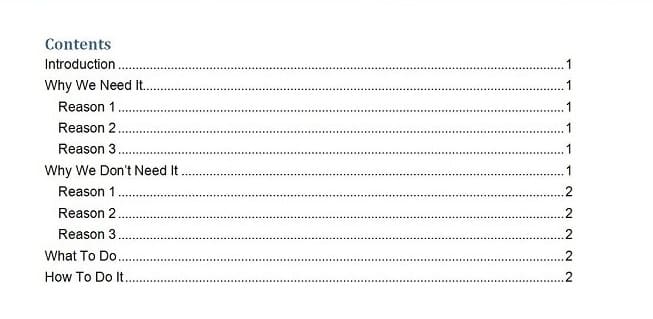A book has several parts—from the preface to the epilogue. For a reader, these details may casually fly right by, but only an author knows the effort that goes into every element. One such element is the index.
Serving as the ultimate roadmap, an index lists the names, things, and places associated with the topics throughout the book according to their page numbers.
A book index is more than an appendage to a book; it’s an integral part that adds value. Indexes are more relevant for non-fiction books, as they offer knowledgeable information that readers can instantly access.
If this is your first time writing a book, indexes might be a little hard to understand and even harder to create. I remember it took me a while with my first book, too! But once you get the hang of them, there’s nothing easier to do than create an index.
So, whether you’re trying to understand and craft one yourself or looking for professional help, this blog has all the information you’re looking for.
We will walk you through:
- Understanding the index adds convenience and value to your book
- Types of indexes
- Example of top indexes in books and their benefits
- A step-by-step guide on writing an index
What is an Index in a Book?
There are tons of book index examples you can check out to get a rough idea of what an index looks like. Generally, an index would include a list of relevant words with corresponding page numbers and references to pinpoint their exact location inside the book.
For example, there could be several page number references if the same word appears multiple times in the book.
What makes indexes convenient to use is that they follow alphabetical order. You may find subheadings right below multi-faceted topics and go to the relevant page and learn about the same word in different contexts.
The idea of creating a book index may seem archaic in today’s digital world. However, many authors, scholars, and readers still use book indexes to access relevant information, especially through enormous books.
And if you’re creating one for your book, it is important to make it as accurate as it should be. The last thing you want is to misguide your readers or cause them trouble locating a word or reference. While an index may cover only a tiny portion of the book, it should be efficiently and correctly completed.
Where are Indexes Used?
Apart from the common indexes found in technical reports and non-fiction books, they are also useful for navigating other sources of information, such as journal articles, online databases, art collections, websites, atlases, and maps. For eBooks and online reports, indexes are directly linked with the corresponding words in the text for ease of use.
Moreover, indexes are mandatory for reports produced by different governing and corporate agencies.
Features of a Good Index
So how do you know if you’ve drafted an excellent index? Think of it as a map of a book. The concept is identifying key ideas and themes, cross-referencing information, and grouping similar concepts for ease of access.
A good index will have the following features:
- Authentically arranged in alphabetical order
- All corresponding references are authentic and lead to relevant information on the topic
- Consistent, useful information
- Precise and the most relevant use of the word or phrase
- Breaks the lengthy blocks using sub-categories
Types of an Index in Books
There are four main types of indexes:
Subject/General Index
This is the most common type and covers all relevant information that you can fill up in the last pages of the book. These indexes are more detailed and comprehensive. This type includes specific names, terms, events, and more and directs the reader through cross-referencing throughout.
Author/Name Index
Non-fiction and science books include many research citations and, therefore, contain an author or name index. This type involves all names, governing bodies, and institutions involved in the research process. Some books may include both subject and author indexes.
Recipe Index
Cookbooks may include both the recipe and subject indexes separately. The subject index may cover the specific discussions, techniques, and ingredients, while the recipe index will highlight all the recipe titles and subdivisions of recipes based on specific ingredients.
Periodical Index
These are most relevant for publications and are regularly updated through intervals. These indexes require controlled vocabulary development to keep the headings consistent as it continues to progress and expand.
Example of an Index in a Book
Different index types will have specific requirements as per the book’s content, as we have already discussed above. A detailed index will include cross-referencing information to associate with other preferred terms or headings of interest. The following is an example of a general index in a book.
An index might read:
- Sale proceeds, sale, 174, 129, 43, 121, see also sale strategy (directs the reader to a relevant term)
- Scripts, 19-20 (grouping term)
- Video, 12-15 (sub-term)
- Podcast, 140
- Search engine optimization, 128-130
- Work Analysis (John Carter and Louis Graham) 90-92 (create a reference to a book).

How to Write the Index of a Book
Are you an author or becoming a book indexer? If you’re learning how to write an index, you’ve landed on the right page. It’s important to understand and admit that writing an index is no easy job. You have to be thoroughly detail-oriented and have some experience to get it done.
Other than a calculative approach, you may also need a strong work ethic and a word processor.
Luckily, you will find professional indexers with years of experience to get the job done smoothly. But if you’re planning to write the index yourself, this section of the article explains it all in the step-by-step process below.
Here’s how you can become an indexer:
Read the Book
Going through each chapter thoroughly is the first step in drafting the book’s index. The key is to create logical headings and include details to make finding information easier for the reader. When indexing, make sure you follow the ground rules—when planning, think of indexes and how neatly everything is arranged.
This is what your approach should look like:
- Sorting through words or phrases in alphabetical order
- Includes page range references
- It may include information related to illustrations, tables, and figures
- Rightly formatting the cross-reference document
It’s tempting to skip the first step of reading the book when you’ve written it yourself. But make sure to read the book and recollect all the small details or nuances that may have flipped in the memory.
Utilize Indexing Tools
Consider utilizing efficient indexing software tools available for assistance and making this job easy. If you are new to the concept, streamlining the indexing procedure using reliable indexing software can be a game changer.
Leave a Mark
Make the task easier and more fun as you manually pick words and information to include in the book index. Whether you’re indexing an eBook or a hard copy, annotate the content as you look for potential section headings and search terms.
Doing so minimizes the chance of making a mistake during the indexing procedure.
Finalize the Formatting
Before you manually start making entries in the index, make sure you address formatting concerns and know what you are doing. This is a major decision, especially with page numbers and cross-referencing. Determine different styles and choose the one that goes best with your book and genre.
Start Drafting Your Index
Now that all the initial work is complete and the main content is read and noted several times, you can add entries to the index with main headings and subheadings. Stick to a consistent style, and don’t forget to include everything you have noted in the content.
No, it doesn’t end there. Go back to your book index as often as you have to to ensure it is authentic and absolutely error-free. At the very least, proofread and edit for punctuation, spelling, grammar, and writing conventions to ensure consistency.
The ultimate goal is to make sure using the index is a seamless and pleasant experience for your reader.
Incorporate Feedback
Just like the rest of the book, the index is also for your readers. Making it more complex and lengthy can be off-putting. Your index should make navigation easier. So stick to a simpler format that can easily leave a great first expression of using the index.
Final Word
Book indexing is a skill and may require a certain amount of knowledge and experience to guarantee efficiency. And while it is possible for anyone to learn and implement those skills, there are many professional book indexers to do this job for you.
You can closely work with the indexer to make sure it includes everything you want it to. They have what it takes to write a flawless index that will encourage your readers to make the most out of your book.




